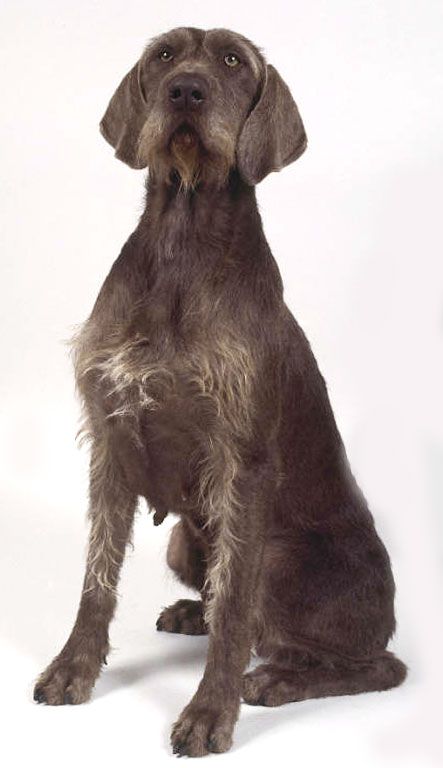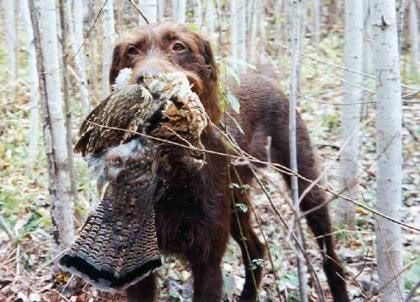Post by DogGoneGood on Sept 28, 2008 12:27:24 GMT -5
CKC Group: 1 - Sporting Dogs
Origin: Germany
Purpose: Tracking, Pointing & Retrieving

Height: 22-25 inches
Weight:45-70 pounds
Tail: The tail is docked leaving approximately two thirds of its original length.
Coat & Colour: Their color can be variations of liver, although some of them are black, others are light brown or fawn. White markings on the cest and paws are permitted.
The ideal Pudelpointer coat is harsh, wiry and dense but all kinds of variations are possible. Some specimens are almost smooth coated and others have a rather long and woolly coat, but all Pudelpointers should have pronounced eyebrows and whiskered muzzles.
History: The original purpose for this crossing was to combine the intelligence, water love, retrieving instinct, easy trainability and willingness to please, wrapped into the protective coat of the Pudel with the unending desire to hunt, birdiness, pointing instinct, field nose and endurance of the English Pointer.
During the first 30 years, only 11 Pudels were used against well over 80 Pointers. From then on, only occasional re-introductions of Pointers were undertaken, especially after the two World Wars severely depleted the breeding stock.
The Pudelpointer in its home country Germany, has always ranked among the finest performers in tests and in the field, and is sought by those who enjoy and value a dog with desire and drive. The breed is medium sized, between 22 and 26 inches at the shoulder and weighs anywhere from 45 to 70 lbs. Pudelpointers are predominantly solid in color, from dark brown to the color of autumn leaves, and occasionally black. The ideal coat is harsh, wiry and dense.

Sources:
Pudelpointer Club of North America
Origin: Germany
Purpose: Tracking, Pointing & Retrieving

Height: 22-25 inches
Weight:45-70 pounds
Tail: The tail is docked leaving approximately two thirds of its original length.
Coat & Colour: Their color can be variations of liver, although some of them are black, others are light brown or fawn. White markings on the cest and paws are permitted.
The ideal Pudelpointer coat is harsh, wiry and dense but all kinds of variations are possible. Some specimens are almost smooth coated and others have a rather long and woolly coat, but all Pudelpointers should have pronounced eyebrows and whiskered muzzles.
History: The original purpose for this crossing was to combine the intelligence, water love, retrieving instinct, easy trainability and willingness to please, wrapped into the protective coat of the Pudel with the unending desire to hunt, birdiness, pointing instinct, field nose and endurance of the English Pointer.
During the first 30 years, only 11 Pudels were used against well over 80 Pointers. From then on, only occasional re-introductions of Pointers were undertaken, especially after the two World Wars severely depleted the breeding stock.
The Pudelpointer in its home country Germany, has always ranked among the finest performers in tests and in the field, and is sought by those who enjoy and value a dog with desire and drive. The breed is medium sized, between 22 and 26 inches at the shoulder and weighs anywhere from 45 to 70 lbs. Pudelpointers are predominantly solid in color, from dark brown to the color of autumn leaves, and occasionally black. The ideal coat is harsh, wiry and dense.

Sources:
Pudelpointer Club of North America

